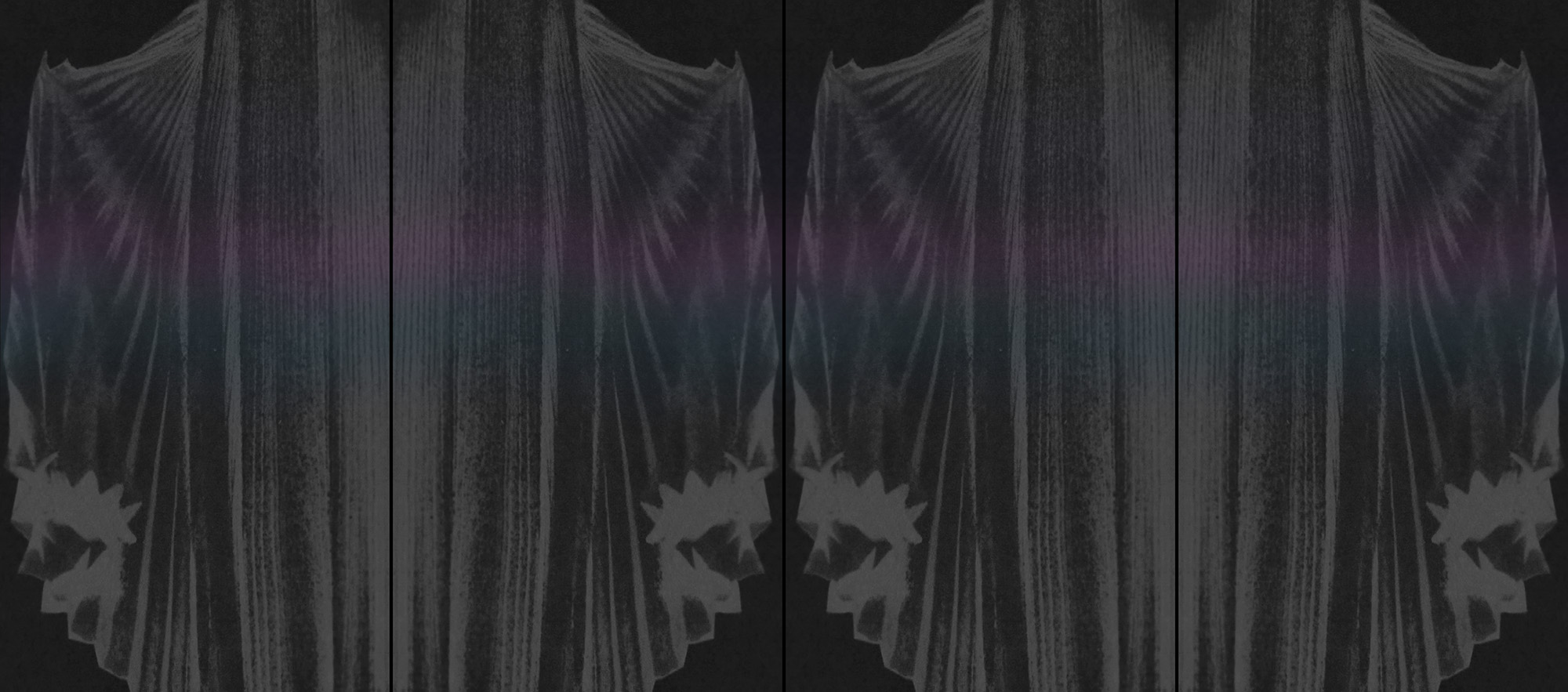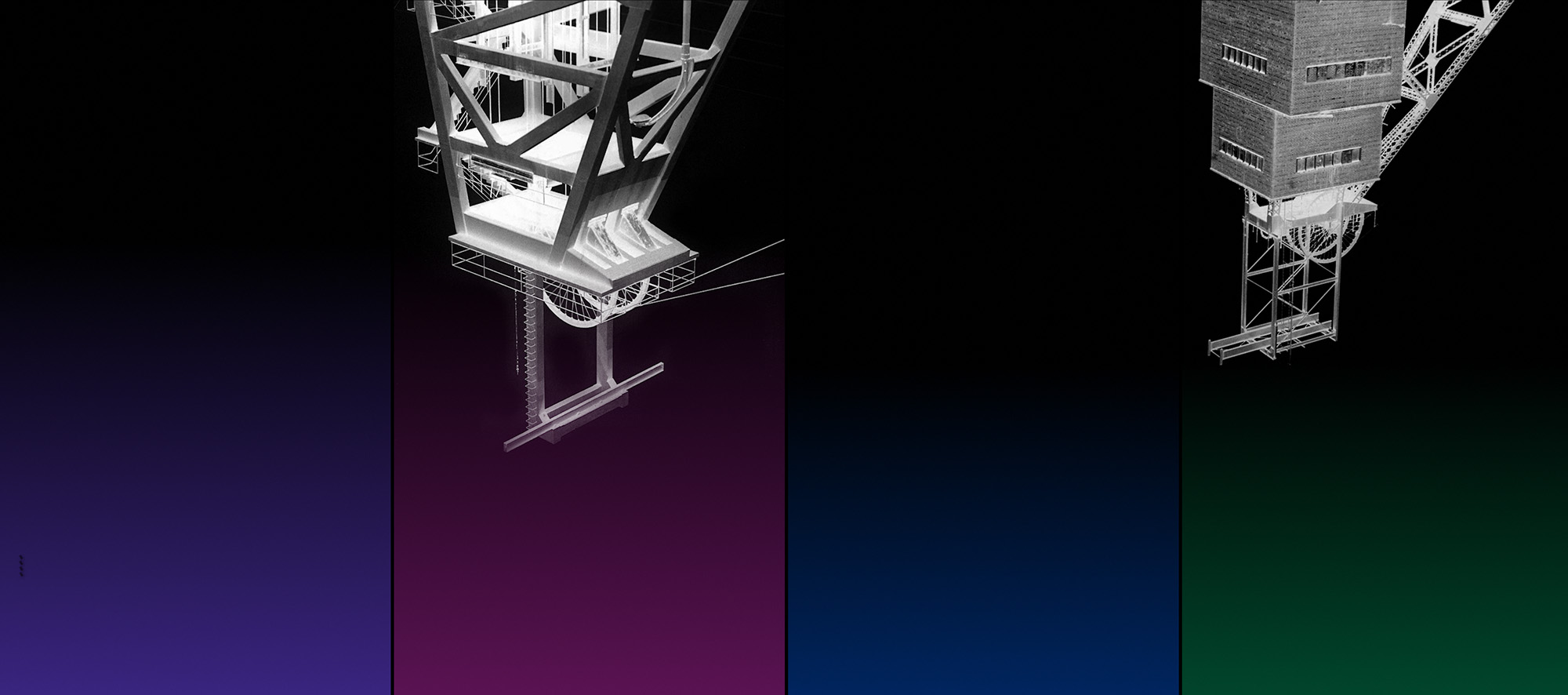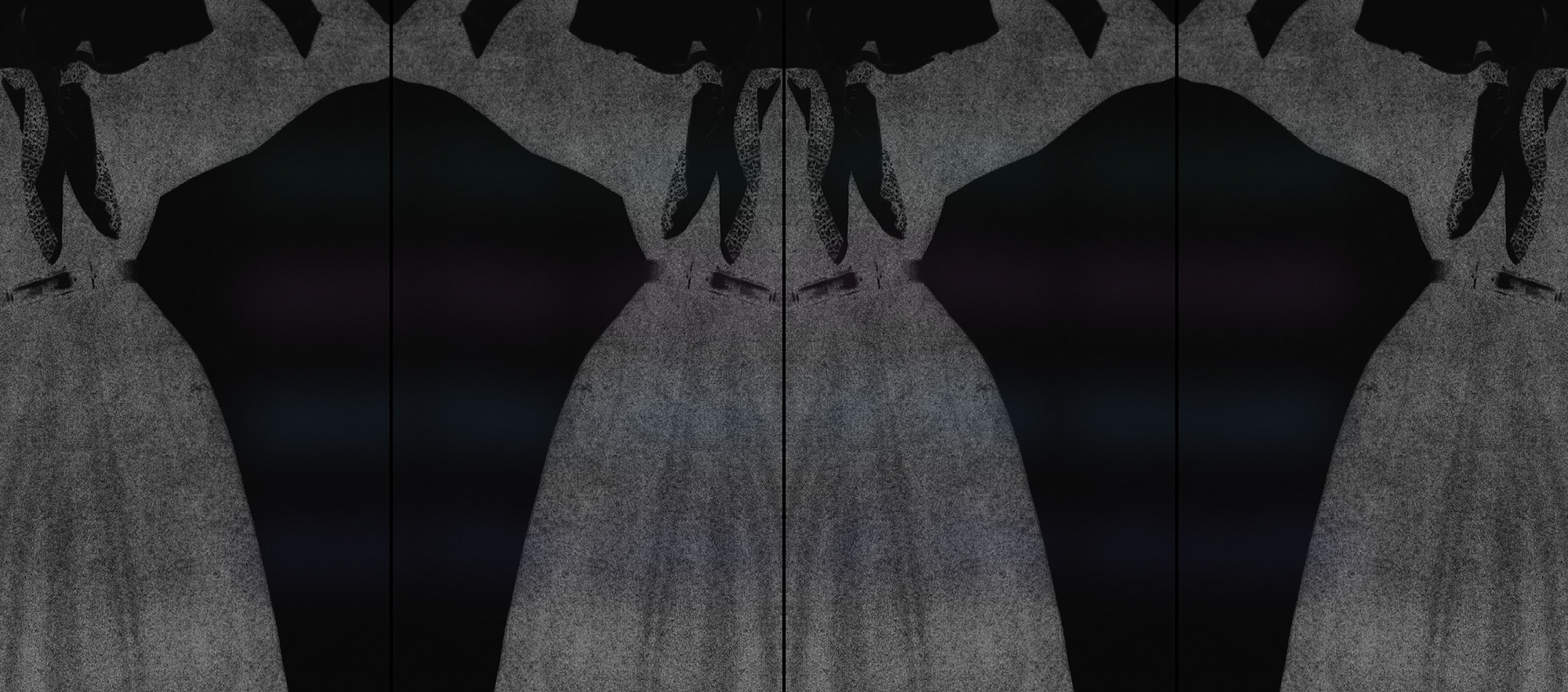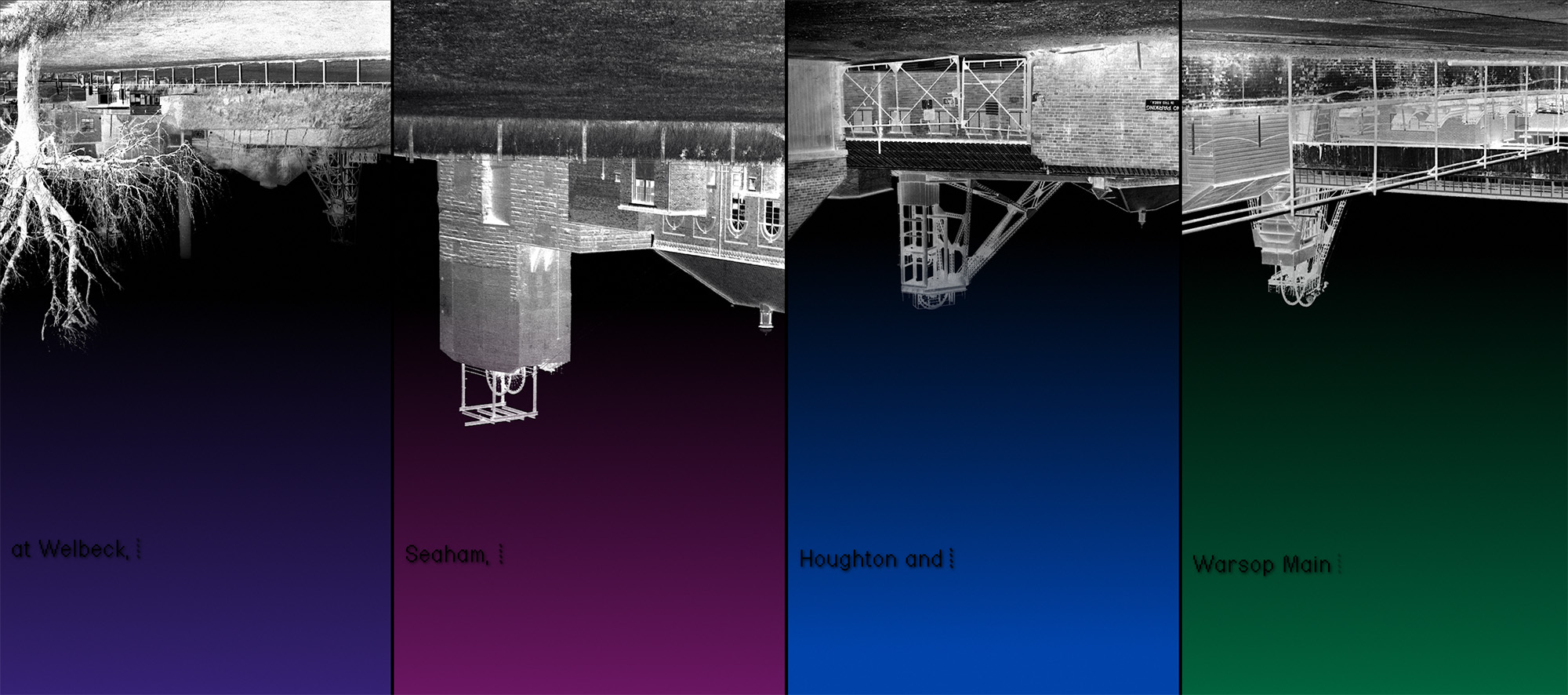Mining memory & meaning with Elizabeth Price
With an exhibition in Glasgow’s Gallery of Modern Art, Turner Prize winning artist Elizabeth Price brings together three recent moving image works in her exhibition SLOW DANS. Neil Scott visited for recessed.space, finding within the darkness connections and histories emerge.
Virginia Woolf described
the critic and fellow Bloomsbury Group member, Roger Fry, as "quivering yet still” when looking at art. She said Fry was like a
hummingbird: receptive to the vibrations emanating from the paintings. I was
thinking about Fry's vibrations as my skeleton was shaken by the subwoofer
speakers in Elizabeth Price's THE TEACHERS, one of a trilogy of video
works that form the installation, SLOW DANS, currently on display at the
Gallery of Modern Art (GoMA) in Glasgow. Fry – the quivering hummingbird –
would
have been squashed against the wall were he to be exposed to SLOW DANS.
It is loud, dark, and totally immersive.
![]()
![]()
![]()
![]()
GoMA is not usually a great space for art. Its magnificent main hall, originally built to host dinners for the tobacco lord, William Cunninghame, is gloomy despite its 30ft high ceilings. A double row of monolithic Corinthian columns interrupt movement around the gallery – something the SLOW DANS installation gets around by making it so dark you can't see where you are and so loud you can't hear the person next to you. All attention is focused on three multiscreen videos, which are activated in turn.
FELT TIP, the central piece in this loose triptych, is the most engaging of the three. It is narrated by unnamed future beings who can store data in the tips of their fingers - and wear neckties ironically. They are observers of the longue durée, a form of history that doesn't look to mere causal tracking of events but incorporates an analysis of larger material forces. The design of ties, representing power of institutions and the patriarchy, here is visually connected to data stores that power the economy.
![]()
![]()
![]()
![]()
A hundred years ago GoMA was the Royal Exchange, a trading floor for commodities from across the British empire. In 1880, the building also hosted Glasgow's first telephone exchange, a technology that would render the trading floor function superfluous. One becomes aware of these historical threads and linguistic slippages after watching Price's videos.
In KOHL, the images of coal mines taken by a former miner, Albert Walker, are turned upside down and used to reflect on The Visitants, uncanny residues that emerge in mines and car parks. The flooded mines transmit sound through the network of tunnels. Kohl is the eye makeup you wear to a dance and refers back to the coal fields. It all connects. Price spends around a year creating each of these videos, they are hypnotic and allusive, casting the world of someone totally lost in references that no longer translate to the real world.
This idea of an untranslatable experience is fully realised in THE TEACHERS, which describes a collection of mute academics who can only communicate in the sibilant sounds of keyboard tapping and book spines opening and closing. The insectoid sounds unsettle like the rattle of a triffid, while in the imagery, dresses turn into Rorschach blots.
When the Royal Exchange closed in 1945, the building lay dormant until it was purchased by the Glasgow Corporation to host Stirling's Library. At the time it was the second largest in Glasgow after the Mitchell Library, whose famously psychedelic carpets are the subject for another Elizabeth Price exhibition in the city, on display at The Hunterian until 16 April 2023.
Yes, it's true: you wait years for an Elizabeth Price exhibition to come to Glasgow then two come along at once. Bizarrely, this is not by design. It was a combination of the temporal disruptions of Covid-19 and the slow curatorial reckoning with an artist winning the Turner prize, which for Price happened in 2012. I love the idea one artist might take over an entire city - not only would different aspects of the artist's work be on show, but it would encourage collaboration between different galleries and encourage people to walk from venue to venue. After all, the joy of a biennial is not just the art but a physical and cultural exploration of the city.
![]()
A walk across town from GoMA to the Hunterian would take art-pedestrians by the M8 motorway, a twentieth-century scar which has astride, like a beached whale, the Mitchell Library laid with those carpets Price has also focused her gaze upon. UNDERFOOT, a new work commissioned to research the archives of Stoddard and Templeton Ltd, who manufactured them is, like all Price's work, a modest gesamtkunstwerk involving music, literature, video, imagery, voice, and typography. Texts unlock meaning in the carpet patterns, showing how the looms generate imagery on fabric like pixels on a screen.
As I emerged from both exhibitions, I saw historical narratives imprinted on the world. I was aware of the interconnections. Virginia Woolf wrote that human nature changed “about December 1910.” The date refers to the radical exhibition Manet and the Post-Impressionists, organised by Roger Fry and which changed the rules on what counted as reality in the arts, heralding the arrival of moernism. For Elizabeth Price, we are still sifting through the remains of the post-war consensus that collapsed around 1979, facing up to the idea that new narratives are struggling to emerge.
![]()




GoMA is not usually a great space for art. Its magnificent main hall, originally built to host dinners for the tobacco lord, William Cunninghame, is gloomy despite its 30ft high ceilings. A double row of monolithic Corinthian columns interrupt movement around the gallery – something the SLOW DANS installation gets around by making it so dark you can't see where you are and so loud you can't hear the person next to you. All attention is focused on three multiscreen videos, which are activated in turn.
FELT TIP, the central piece in this loose triptych, is the most engaging of the three. It is narrated by unnamed future beings who can store data in the tips of their fingers - and wear neckties ironically. They are observers of the longue durée, a form of history that doesn't look to mere causal tracking of events but incorporates an analysis of larger material forces. The design of ties, representing power of institutions and the patriarchy, here is visually connected to data stores that power the economy.




A hundred years ago GoMA was the Royal Exchange, a trading floor for commodities from across the British empire. In 1880, the building also hosted Glasgow's first telephone exchange, a technology that would render the trading floor function superfluous. One becomes aware of these historical threads and linguistic slippages after watching Price's videos.
In KOHL, the images of coal mines taken by a former miner, Albert Walker, are turned upside down and used to reflect on The Visitants, uncanny residues that emerge in mines and car parks. The flooded mines transmit sound through the network of tunnels. Kohl is the eye makeup you wear to a dance and refers back to the coal fields. It all connects. Price spends around a year creating each of these videos, they are hypnotic and allusive, casting the world of someone totally lost in references that no longer translate to the real world.
This idea of an untranslatable experience is fully realised in THE TEACHERS, which describes a collection of mute academics who can only communicate in the sibilant sounds of keyboard tapping and book spines opening and closing. The insectoid sounds unsettle like the rattle of a triffid, while in the imagery, dresses turn into Rorschach blots.
When the Royal Exchange closed in 1945, the building lay dormant until it was purchased by the Glasgow Corporation to host Stirling's Library. At the time it was the second largest in Glasgow after the Mitchell Library, whose famously psychedelic carpets are the subject for another Elizabeth Price exhibition in the city, on display at The Hunterian until 16 April 2023.
Yes, it's true: you wait years for an Elizabeth Price exhibition to come to Glasgow then two come along at once. Bizarrely, this is not by design. It was a combination of the temporal disruptions of Covid-19 and the slow curatorial reckoning with an artist winning the Turner prize, which for Price happened in 2012. I love the idea one artist might take over an entire city - not only would different aspects of the artist's work be on show, but it would encourage collaboration between different galleries and encourage people to walk from venue to venue. After all, the joy of a biennial is not just the art but a physical and cultural exploration of the city.

A walk across town from GoMA to the Hunterian would take art-pedestrians by the M8 motorway, a twentieth-century scar which has astride, like a beached whale, the Mitchell Library laid with those carpets Price has also focused her gaze upon. UNDERFOOT, a new work commissioned to research the archives of Stoddard and Templeton Ltd, who manufactured them is, like all Price's work, a modest gesamtkunstwerk involving music, literature, video, imagery, voice, and typography. Texts unlock meaning in the carpet patterns, showing how the looms generate imagery on fabric like pixels on a screen.
As I emerged from both exhibitions, I saw historical narratives imprinted on the world. I was aware of the interconnections. Virginia Woolf wrote that human nature changed “about December 1910.” The date refers to the radical exhibition Manet and the Post-Impressionists, organised by Roger Fry and which changed the rules on what counted as reality in the arts, heralding the arrival of moernism. For Elizabeth Price, we are still sifting through the remains of the post-war consensus that collapsed around 1979, facing up to the idea that new narratives are struggling to emerge.

Elizabeth Price is an internationally renowned artist with work in collections around the world. She has had
solo exhibitions at Tate Britain, London, UK; The Walker Art Center, Minneapolis, USA; Chicago Institute of
Art, USA; Julia Stoschek Foundation, Dusseldorf, Germany; The Baltic, Newcastle Upon Tyne, UK; and The Hunterian, University of Glasgow, Scotland.
In 2012, she was awarded the Turner Prize for her video installation The Woolworths Choir of 1979. In 2013,
she won the Contemporary Art Society Annual Award with the Ashmolean Museum of Art and Archaeology
in partnership with the Pitt Rivers Museum and the Ruskin School of Drawing and Fine Art.
Neil Scott is a designer and developer based in Glasgow. His goal is to design websites that help people connect beyond the screen. Since 2022, he has been writing a weekly newsletter exploring culture and psychology.
www.neil-scott.com
www.neil-scott.com
images
Elizabeth Price: SLOW DANS is exhibiting at the Gallery of Modern Art, Glasgow, until 14 May 2023, free admission.
For more details visit:
www.glasgowlife.org.uk/event/1/elizabeth-price-slow-dans
Elizabeth Price: Underfoot is exhibiting at the Hunterian Art Gallery, Glasgow, until 16 April 2023, free admission.
For more details visit:
www.gla.ac.uk/hunterian/visit/exhibitions/exhibitionprogramme/elizabethprice
images
All images
© Elizabeth Price and are stills from the films in exhibition:
Elizabeth Price, FELT TIP, 2018. Commissioned by Artangel and Glasgow Life.
Elizabeth Price, KOHL, 2018
Elizabeth Price, THE TEACHERS, 2019
Commissioned by Artangel and the Whitworth, The
University of Manchester.
publication date
08 February 2022
tags
Carpet, Darkness, Empire, FELT TIP, Roger Fry, Glasgow, Glasgow Museum of Modern Art, GoMa, Hunterian Art Gallery, installation, KOHL, mines, Mitchell Library, patriarchy, Elizabeth Price, Neil Scott, SLOW DANS, sound, THE TEACHERS, tie, tunnels, video, Albert Walker, Virginia Woolf
For more details visit:
www.glasgowlife.org.uk/event/1/elizabeth-price-slow-dans
Elizabeth Price: Underfoot is exhibiting at the Hunterian Art Gallery, Glasgow, until 16 April 2023, free admission.
For more details visit:
www.gla.ac.uk/hunterian/visit/exhibitions/exhibitionprogramme/elizabethprice


